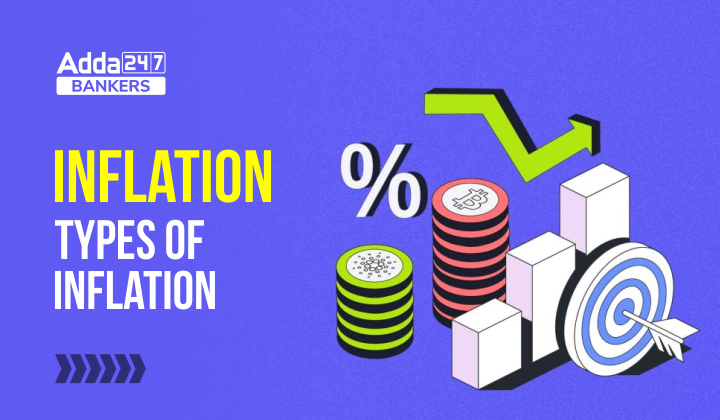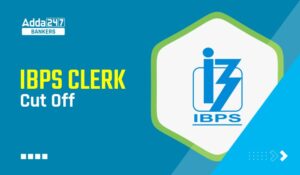Table of Contents
In this article we will be discussing about inflation, types of inflation, reasons of inflation, how inflation is calculated, Consumer price index and Wholesale Price Index.
What is inflation?
Inflation refers to the rise in the prices of most goods and services of daily or common use, such as food, clothing, and housing.
What are types of inflation on the basis of reasons for the increase in prices?
Demand-pull inflation – Demand-pull inflation is the upward pressure on prices that follows a shortage in supply, a condition that economists describe as “too many dollars chasing too few goods.”
Cost-push inflation – this occurs when there is a rise in the price of raw materials, and higher taxes, resulting in an increase in the cost of making a product.
What are the types of inflation on the basis of how fast the prices increase?
Galloping Inflation: When inflation rises to 10% or more
Walking Inflation: An inflation between 3-10% a year.
Creeping Inflation: Creeping or mild inflation is when prices rise 3% a year or less. A price increase of 2% or less is known to benefit the economy. This kind of mild inflation creates demand by making the consumers expect that prices will go up. This creates demand and drives economic expansion.
Inflation: Why in news?
Retail inflation softened to 6.71 per cent in July due to moderation in food prices. It surged to 7.79% in April, that was highest in 8 Years. National Statistical Office (NSO) under the Ministry of Statistics and Program Implementation publishes Consumer Price Index.
Reasons for inflation:
Higher prices of essential food items
Higher prices of cooking fuel and motor fuel.
Terms related to inflation
Deflation: It is the opposite of inflation. It’s when prices drop, and it’s caused when the asset bubble bursts. For example, the housing market crash of 2007. It’s harder to stop deflation.
Hyperinflation: This occurs when prices go up by 50% a month. It is a very rare occurrence.
Core Inflation: It is the rise in the prices of everything except food and energy. That’s because the prices of energy (power and fuel) and food are highly volatile, and therefore, they have been kept out of core inflation.
What is the Consumer Price Index?
The Consumer Price Index (CPI) measures the average change in prices over time that consumers pay for a basket of goods and services. CPI measures retail inflation, and it calculates the price difference of goods and services such as food, education, medical care, electronics, etc., which the consumers buy to use.
It is released by the National Statistical Office (NSO).
Four types of CPI are as follows:
- CPI for Industrial Workers (IW).
- CPI for Agricultural Labourer (AL).
- CPI for Rural Labourer (RL).
- CPI (Rural/Urban/Combined).
Of these, the first three are compiled by the Labour Bureau in the Ministry of Labour and Employment. The fourth is compiled by the NSO in the Ministry of Statistics and Programme Implementation.
The base Year for CPI is 2012.
Recently, the Ministry of Labour and Employment released the new series of Consumer Price Index for Industrial Workers (CPI-IW) with the base year 2016.
The Monetary Policy Committee (MPC) uses CPI data to control inflation. In April 2014, the Reserve Bank of India (RBI) adopted the CPI as its key measure of inflation. The Monetary Policy Committee (MPC) constituted by the Central Government under Section 45ZB of the RBI act determines the policy interest rate required to achieve the inflation target.
What is the Wholesale Price Index?
A Wholesale Price Index (WPI) measures and tracks the changes in the price of goods before they reach consumers: goods that are sold in bulk and traded between entities or businesses (rather than consumers). WPI measures wholesale inflation. It captures the goods or services sold by businesses to smaller businesses for selling further.
It measures the changes in the prices of goods sold and traded in bulk by wholesale businesses to other businesses.
Published by the Office of Economic Adviser, Ministry of Commerce and Industry.
It is the most widely used inflation indicator in India.
The base year of All-India WPI has been revised from 2004-05 to 2011-12 in 2017.
Target 30+ in General Awareness: Payment & Settlement Systems Act, 2007
Target 30+ in General Awareness: Banking Regulations Act





 GA Capsule for SBI Clerk Mains 2025, Dow...
GA Capsule for SBI Clerk Mains 2025, Dow...
 The Hindu Review October 2022: Download ...
The Hindu Review October 2022: Download ...
 IBPS Clerk Mains Cut Off 2025, Check Pre...
IBPS Clerk Mains Cut Off 2025, Check Pre...







